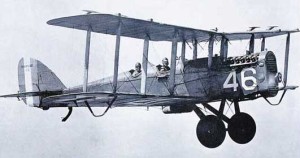By Cassandra Burns
The 1920s saw a huge surge of job opportunities that paid better, which increased wages; this meant that more than just the wealthy could now travel. The surplus of money allowed for many of the poorer people to begin to be able to afford nicer things. Many people saved up for cars, which were paid for in installments like many do now. People still used railways to travel, and ocean liners became increasingly popular as traveling to warmer places during the winter was a favorite vacation for the wealthy. Airplanes were also beginning to have a use outside of war, and closer to the end of the century, they were developed enough to carry passengers. People were also incredibly interested in the money flowing into the development of these types of transportation, fueling the rapid development and production of them.
Automobiles in the 20s allowed for low-cost, efficient travel for the masses. The mass production of cars led to them being much more affordable for the middle class, leading to roughly 10 million cars in the United States by 1921. Warren G. Harding, the President at the time, spent over $70 million to make the roads running across the nation more accommodating for the increased amount of travel. This was mainly funded for by the tax on gas, which was between 2 and 5 cents per gallon. Cars had larger, skinnier tires, which were better for going through the muddy, rough roads. The increase in cars led to motels and service stations being built. Other than travel, businesses started using cars to transport goods easier and police forces also began using them.
Railways were all over the United States, also allowing for decently low cost travel as well. There were many smaller railways, and there were huge efforts to combine the smaller railways into bigger companies to increase profit and productivity. In terms of mass transportation, trains and enormous ocean liners dominated the field. Trains were used for traveling the country, and ocean liners opened up the entire world map. Since ships kept getting bigger to accommodate the amount of people wanting to travel, the Suez Canal was made larger. Cruises became popular, particularly during the winter; people wanted to travel to nice, warmer places to escape the cold. This is what caused tan skin to become a symbol of wealth, when it was previously pale, white skin that was the status symbol for women. Of course, trains remained one of the main forms of transporting materials across the country.
Airplanes were still under development as far as travel was concerned; they were mainly used for delivering mail when there was no war going on. However, closer to the end of the decade, air travel was making progress and airplanes were used for travel more often. Fun fact: post offices actually considered putting landing strips on their roofs for planes. At first, planes were built with wood, but as the designs developed, metal became the main component used. WWI pilots made a living by showcasing their flying skills and making passenger rides. The first airport was built in 1927, complete with an office for tickets and a waiting room.
The 1920s was a huge decade for the development of transportation. With the economy being as good as it was, many people were actually able to take advantage of their vacation time and were able to travel and see other places on whim. Railroads were still a dominating figure in the transportation industry, but ocean liners held their fair share of the market. Cars and airplanes were the up and coming forms of transportation, and with time, they were able to develop into the main forms of transportation that we know today. Things were getting easier and easier to move around, and technology was advancing at a fast pace; overall, it was a good decade.
Works Cited:
Scott, Robert. “1920s Travel.” 1920’s Travel. N.p., 2005-2013.
Web. 1 Mar. 2015.


